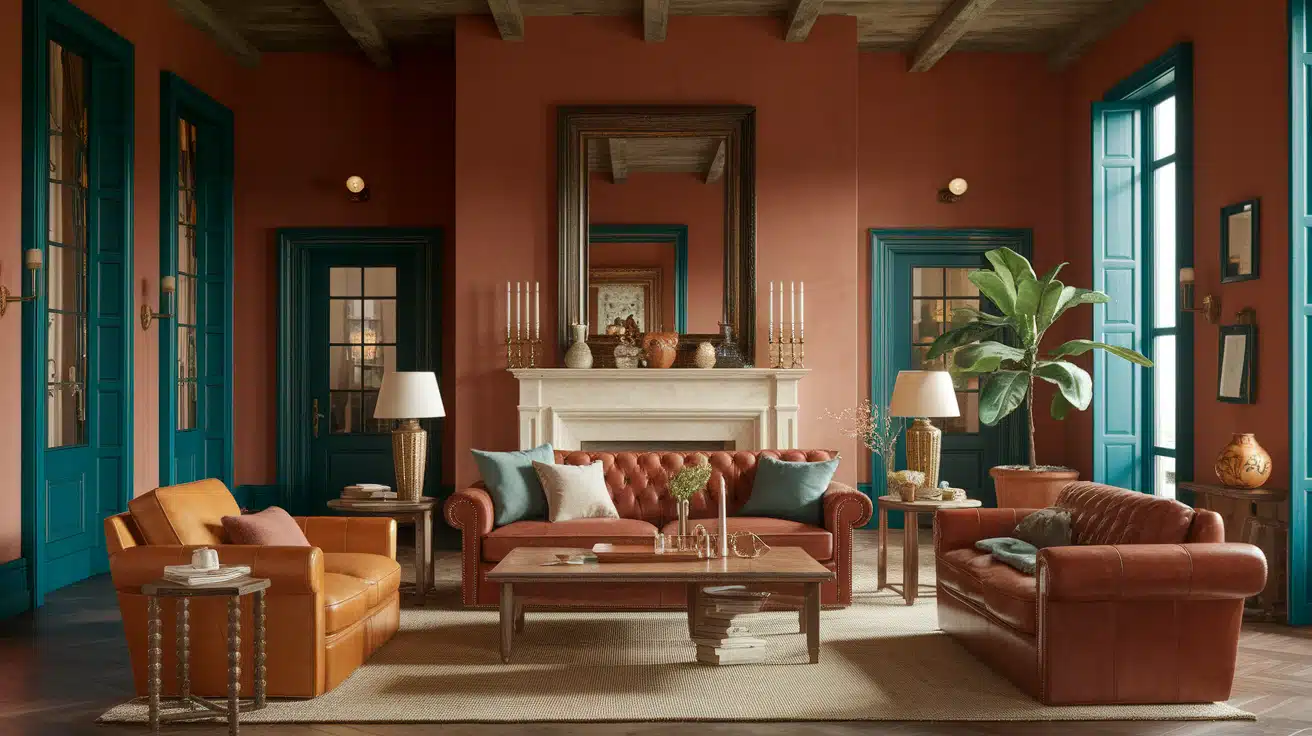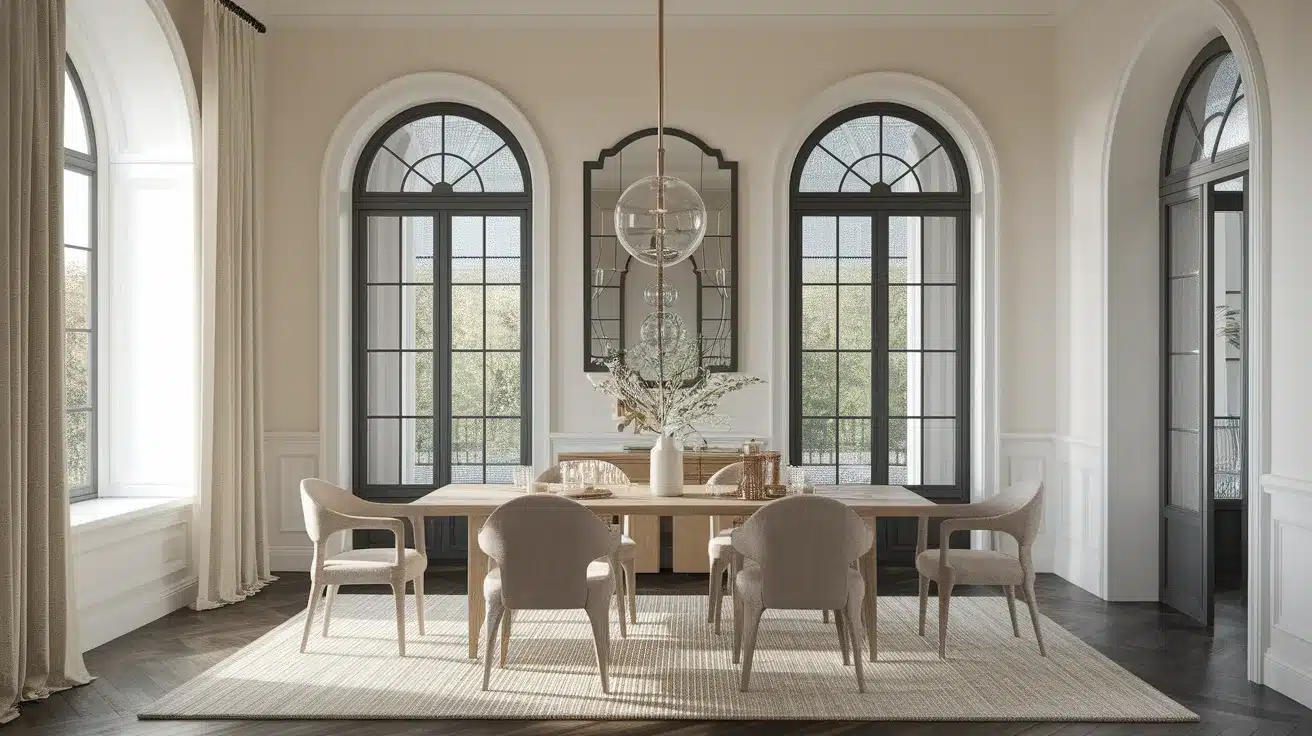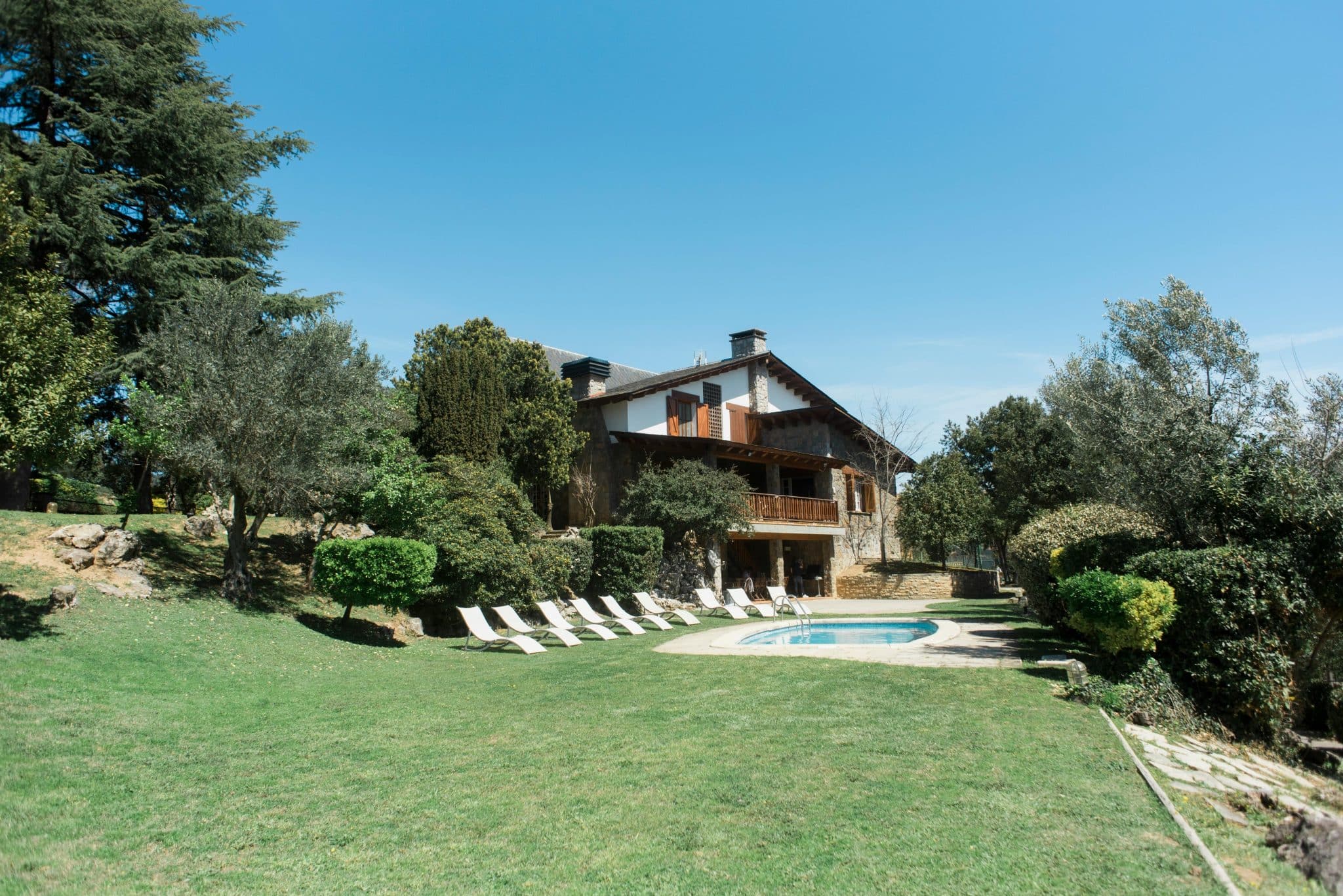When I first stepped into a sun-drenched Italian villa years ago, I was immediately struck by how luxurious and incredibly livable the space felt.
That’s the magic of Italian home design – it’s refined without being stuffy, lavish without sacrificing comfort.
I’ve spent years studying what makes these spaces feel so special, and I’m excited to share my favorite elements with you.
From the warm Mediterranean color palette to those architectural details that instantly transport you to Tuscany, these 11 approaches can help change your home, whether you’re renovating or simply refreshing your space.
Ready to bring a touch of Italian warmth and timeless style into your everyday living? Let’s dive in!
What Is Italian-Style Home Design?
Italian-style home design combines centuries of tradition with practical living spaces. The style features natural materials like stone walls, terracotta tiles, and wrought iron details that create warmth and character.
Colors typically include earthy tones, soft yellows, and muted reds that reflect the Italian landscape. The layout often centers around open spaces that connect indoor and outdoor areas.
Family gatherings and meals take priority, with kitchens and dining areas serving as focal points. Furniture is sturdy and functional while maintaining visual appeal, with many pieces handcrafted for lasting quality.
This design style skillfully blends historical elements with modern needs. Classic architectural details coexist with current technologies and comforts.
Key Characteristics of Italian Interiors
Before diving into the 11 ideas, let’s examine the defining elements that make Italian design so distinctive:
-
High-quality natural materials – Materials like marble, terracotta, and walnut that patina beautifully with time and daily use.
-
Comfortable yet elegant living – Spaces that balance refined aesthetics with practical comfort for genuine everyday living.
-
Antiques and artisan details – Handcrafted elements that tell stories and create spaces with original character and history.
-
Natural light and open-air living – The design embraces sunlight with seamless transitions between indoor and outdoor spaces.
-
Warm, earthy color palette – Mediterranean-inspired colors reflecting Italy’s landscapes, from terracotta hills to coastal blue waters.
Understanding these key characteristics helps explain the “why” behind each of the design elements that follow, allowing you to adapt Italian style authentically to your own home.
The Timeless Appeal of Italian Design
Italian homes balance rustic charm with refined dignity, spaces that feel both refined and deeply comfortable for everyday living.
1. Adopt Mediterranean Colors
The color palette of coastal Italy can convert your home into a warm, inviting sanctuary. Walking through Italian towns, you’re greeted by a harmony of earthy tones that feel both timeless and fresh.
- Terracotta walls bring the warmth of the Italian countryside into dining rooms and entryways, creating a backdrop that feels both rustic and refined.
- Olive-green accents in throw pillows, vases, or small furniture pieces add depth and connect your space to Italy’s natural landscape.
- Deep blues reminiscent of the Mediterranean Sea can be introduced through textiles, artwork, or painted furniture to create a calming atmosphere.
These colors create genuine harmony in various rooms. Living spaces shine with terracotta walls and cream furniture, kitchens feel lively with deep blue cabinets, and bedrooms remain peaceful with olive tones.
2. Invest in Quality Italian Furniture

Italian furniture stands apart through its craftsmanship and timeless design. Genuine pieces tell a story through materials and construction, creating spaces with soul and character.
- Look for real leather sofas and chairs – they last for decades and develop a beautiful patina over time that adds character to your space.
- Wooden tables crafted from walnut, cherry, or olive wood bring natural warmth and can become family treasures passed down through generations.
- Classic armchairs with curved lines and graceful proportions create focal points that anchor your living spaces with Italian culture.
The key to a genuine look is thoughtful mixing. Pair a statement leather sofa with a rustic wooden coffee table, or match an ornate sideboard with simpler dining chairs for balanced harmony.
3. Design a Cozy, Refined Living Room
The Italian living room serves as both a personal retreat and a gathering space for loved ones, striking a beautiful balance between comfort and style.
- Select plush fabrics like velvet for sofas and chairs, creating an inviting atmosphere that encourages relaxation and conversation.
- Incorporate antique accents such as brass candlesticks, ornate picture frames, or a restored chest to add history and personality to your space.
- Choose elegant yet comfortable furniture with gentle curves and thoughtful proportions – nothing should feel overly formal or untouchable.
Statement lighting transforms these spaces – consider a glass chandelier or dramatic floor lamp for ambiance.
Layer in luxurious textures through soft throws, decorative pillows, and quality rugs for depth and tactile comfort. Draw inspiration from Florentine apartments or coastal Italian homes.
4. Create a Traditional Italian Kitchen
In Italy, the kitchen is truly the heart of the home – a place where functionality and beauty coexist without compromise.
- Prioritize natural materials that age beautifully with use. Stone countertops develop a gentle patina that tells the story of family meals and gatherings.
- Incorporate rich wood elements through open shelving, butcher block islands, or exposed ceiling beams that add warmth and character.
- Balance rustic elements with modern functionality – a farmhouse sink paired with quality appliances creates the perfect harmony.
The charm lies in thoughtful details: copper pots hanging from a ceiling rack, open shelving displaying colorful ceramics, and herbs growing in clay pots by the window.
Modern Italian kitchens honor traditional design while incorporating contemporary conveniences like hidden storage and durable materials.
5. Incorporate Italian Art and Decor
Italian art and decorative objects infuse your home with culture, history, and personality, creating a space that feels collected rather than decorated.
- Select sculptures that speak to your personal taste – from small bronze figurines to larger ceramic pieces that serve as focal points in a room.
- Incorporate paintings that capture Italian landscapes, still lifes, or abstract works by Italian artists that add color and movement to your walls.
- Display handmade ceramics from regions like Sicily, Tuscany, or Amalfi, each with distinctive patterns and colors that tell the story of their origin.
Create an Italian-inspired gallery wall by mixing paintings of different sizes with decorative plates, mirrors in ornate frames, and wall sconces for dimension.
Arrange them organically rather than symmetrically. For focal points, consider glass vases, hand-painted urns, or vintage decorative items.
6. Make the Most of Natural Light
Light is perhaps the most fundamental element in Italian design – it alters spaces and creates the warm glow that defines Mediterranean interiors.
- Natural light is prized in Italian homes, with living spaces typically arranged to maximize sunlight throughout the day.
- Create light-filled rooms by keeping window treatments simple and lightweight – linen curtains that filter rather than block light are ideal.
- Arrange furniture to take advantage of natural light patterns, placing reading chairs near windows and ensuring dining tables receive ample daylight.
Consider architectural elements that enhance light: interior transoms, glass-paned doors between rooms, or skylights in darker areas.
Mirrors and glass accessories strategically placed opposite windows amplify natural light, making spaces feel larger and more luminous while adding Italian charm.
7. Create a Luxurious Italian Bedroom
The Italian bedroom balances luxury with serenity, creating a retreat that feels both indulgent and restful.
- Choose bedding in high-quality natural fibers – linen sheets, a cotton coverlet, and perhaps a silk or soft throw for cooler nights.
- Select a bed frame with presence – whether a carved wooden headboard, an iron frame with gentle curves, or an upholstered design in rich fabric.
- Incorporate soft, ambient lighting through bedside lamps with fabric shades, wall sconces with a warm glow, or a small decorative chandelier for romance.
Color choices typically lean toward restful neutrals with subtle accents. Cream walls with earthy or sage-green accents create a peaceful atmosphere.
Antique nightstands, a vintage dressing table, or a restored chest bring in the sense of history while providing practical storage solutions.
8. Add Architectural Features
Architectural elements form the backbone of Italian interiors, creating spaces with drama and presence even before furniture and decor are added.
- Consider incorporating arched doorways or arched details above windows to instantly evoke Italian architecture.
- Add columns as room dividers or decorative elements flanking entryways to create a sense of grandeur and classical proportion.
- Explore the possibility of vaulted ceilings in key rooms – even a single barrel-vaulted ceiling in an entryway or dining room makes a stunning impression.
These features create openness and flow between spaces while defining distinct areas within an open floor plan. They add character without requiring additional square footage.
In modern homes, these elements can be incorporated through simple renovations or artistic painting techniques that create the illusion of architectural details.
9. Use High-Quality Materials
The materials used throughout Italian interiors speak to quality and longevity – a sustainable approach to design that values durability over disposability.
- Natural stone surfaces in bathrooms, kitchens, or even as table tops bring in luxury while providing practical, long-lasting surfaces.
- Clay tiles add warmth to floors and outdoor spaces, developing a beautiful patina over time that only enhances their charm.
- Natural stone elements – whether limestone wall treatments, travertine flooring, or granite accents – connect interiors to the Italian landscape.
These materials can be incorporated in ways both large and small. Kitchen backsplashes in stone or handmade ceramic tile, bathroom vanities topped with travertine, or stone thresholds add luxury without requiring complete renovation.
Unlike trendy finishes that quickly look dated, these classic materials remain beautiful for generations.
10. Create an Italian-Inspired Outdoor Space
Italian living hugs the outdoors as an extension of interior spaces, with terraces, patios, and gardens designed for both beauty and daily use.
- Design outdoor areas with the same attention given to interior rooms – defined spaces for dining, relaxation, and enjoying nature.
- Create covered areas that allow outdoor living regardless of weather – pergolas draped with climbing plants, covered seating areas, or simple canvas awnings.
- Use clay pots in varying sizes to create garden vignettes, filling them with Mediterranean plants like olive trees, lavender, rosemary, and citrus.
Outdoor furniture should be both beautiful and durable – iron tables and chairs, wooden benches with weather-resistant cushions, or stone seating built into garden walls.
The transition between indoors and outdoors is crucial – French doors, framed garden views, and welcoming entrances create seamless natural connections.
11. Focus on Detail with Italian-Style Accessories
The finishing touches in Italian interiors often make the most significant impact, adding personality and realism to your spaces.
- Look for lighting that makes a statement – whether an intricate glass chandelier, an iron floor lamp, or ceramic table lamps with handpainted designs.
- Incorporate textiles with subtle patterns and rich textures – soft throws, decorative pillows, and quality rugs all add layers of comfort and visual interest.
- Display collections thoughtfully – grouped ceramic plates on a wall, vintage glassware on an open shelf, or decorative figurines on a mantel create vignettes that tell your story.
These accessories help unify your Italian-style home, creating connections between different spaces through repeated materials, colors, or themes.
What Not to Do When Designing Italian Interiors
- Avoid matching furniture sets that look like showroom displays – original Italian spaces evolve over time.
- Skip trendy, disposable pieces that won’t last beyond a season or two.
- Don’t overdo ornate elements or create spaces that feel too formal actually to live in.
- Resist the temptation to add Mediterranean clichés like grape motifs or excessive wrought iron.
- Remember, Italian interiors are livable first, beautiful second – never sacrifice comfort for style.
Finding genuine pieces requires patience – study antique shops, estate sales, and specialty importers for items with character and craftsmanship.
Conclusion
The heart of Italian interior design lies not in perfection but in the art of thoughtful curation. My travels through countless Italian homes taught me that these spaces tell stories through generations of collected treasures and practical choices.
As you bring these elements into your own home, remember that the original Italian style develops gradually. Mix old with new, high-end with humble, and always prioritize how a space feels over how it photographs.
The most striking Italian interiors I’ve experienced weren’t created overnight but evolved naturally over time. Trust your instincts, embrace imperfection, and focus on creating rooms where life happens comfortably. That lived-in charm is what truly makes a house feel like an Italian home.


















